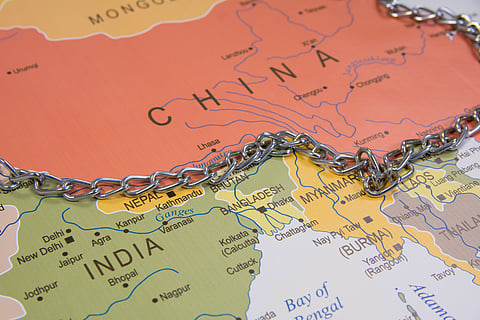
- Destinations
- Experiences
- Stay
- What's new
- Celebrating People
- Responsible Tourism
- CampaignsCampaigns
- Subscribe
- Buy Now

India has officially reopened tourist visa applications for Chinese nationals across all its embassies and consulates worldwide, marking one of the most significant confidence-building steps in the ongoing effort to stabilise India–China relations. The decision, implemented quietly earlier this week, expands on the limited reopening in July 2025, when applications were accepted only at the Indian embassy in Beijing and the consulates in Shanghai, Guangzhou and Hong Kong.
For the travel sector, this move signals the long-awaited return of mobility between two of Asia’s biggest tourism markets. For diplomats and policymakers, it reflects a deliberate attempt to steer relations back toward normalcy after years of strain.
Tourist visa issuance for Chinese nationals was suspended in May 2020 following the eastern Ladakh stand-off and the violent clash in Galwan Valley. As of November 2025, the freeze had lasted almost five years, one of the longest interruptions in direct people-to-people movement between India and China in recent history.
This year, however, saw a noticeable shift. In October 2025, India and China reached a fresh understanding on the disengagement of frontline forces along the Line of Actual Control (LAC), easing tensions that had lingered since 2020. Soon afterward, Prime Minister Narendra Modi and President Xi Jinping met in Kazan, where both leaders agreed to revive stalled communication mechanisms and reopen avenues of cultural, economic and civilian exchange.
With these developments in place, India’s decision to expand global visa acceptance reflects growing confidence in the stabilisation process.
Officials familiar with the latest move say it fits within a broader framework of “people-centric” steps both countries have taken in 2025 to rebuild trust. One of the most visible developments came last month, in October 2025, when direct flights between India and China resumed after being suspended since early 2020. The restoration of air connectivity has already begun easing travel barriers for tourists, families and professionals.
This year also marked the agreement to resume the Kailash Manasarovar Yatra for the 2025 summer season, restoring a pilgrimage route deeply meaningful to Indian travellers. Its revival is widely viewed as a symbolic affirmation of cultural and spiritual engagement.
Meanwhile, throughout 2025, embassies and consulates of both nations commemorated the 75th anniversary of diplomatic relations through a series of cultural events and outreach programmes. Visa facilitation for business, academic and official travellers has also improved steadily through the year, contributing to an atmosphere of cautious cooperation.
The reopening of tourist visas comes after months of sustained engagement at the highest levels. Through 2025, India and China held multiple rounds of discussions involving foreign and defence ministers, national security advisers, and the Special Representatives on the boundary issue—NSA Ajit Doval and Chinese foreign minister Wang Yi—to shape a roadmap for long-term stability along the LAC.
Economic issues have also seen movement this year. China has begun addressing some of India’s longstanding trade concerns, including easing select restrictions on rare earth mineral exports, an important signal of willingness to improve economic transparency and cooperation.
For travellers, especially those in the tourism and hospitality landscape, this reopening marks the restoration of an international corridor that had remained dormant for nearly half a decade. Before the 2020 suspension, Chinese tourist arrivals in India, though modest, were showing steady growth, particularly for destinations like Delhi, Agra, Rajasthan, Goa and the Buddhist Circuit.
With tourist visas now open globally, travel operators anticipate renewed interest and a gradual rebuilding of visitor flows. The move also sets the stage for stronger cultural and experiential exchanges between two ancient civilisations with shared histories and distinct travel traditions.
(With inputs from various sources)
1. When did India reopen tourist visas for Chinese nationals?
India officially reopened tourist visa applications for Chinese travellers in November 2025, allowing submissions across all embassies and consulates worldwide.
2. Why were tourist visas for Chinese citizens suspended?
Tourist visas were suspended in May 2020 following the Galwan Valley clash and the broader military stand-off in eastern Ladakh, leading to nearly five years of restricted travel.
3. Are direct flights between India and China operating again?
Yes. Direct flights resumed in October 2025, significantly improving travel connectivity after being suspended for almost five years.
4. What other India–China exchanges have resumed in 2025?
Along with tourist visas, 2025 has seen the revival of the Kailash Manasarovar Yatra, cultural events marking 75 years of diplomatic ties, and improved visa facilitation for business and academic travellers.
5. Which Indian destinations are expected to see increased Chinese tourist interest?
Destinations like Delhi, Agra, Jaipur, Goa, Mumbai, and the Buddhist Circuit are projected to attract renewed Chinese visitor flows as travel normalises.
